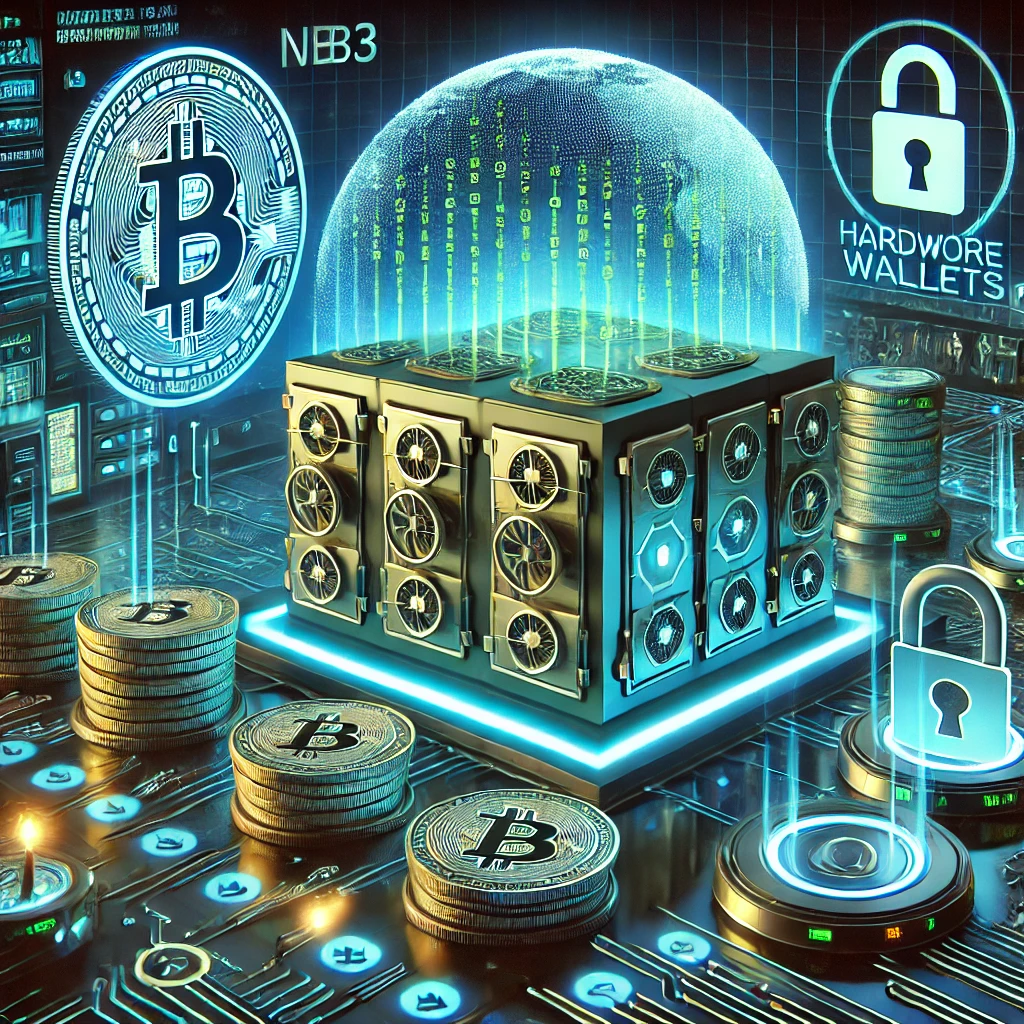As we transition from the traditional internet (Web2) to the decentralized web, known as Web3, the landscape of cybersecurity faces new challenges and opportunities. Web3 is characterized by decentralization, where data and control are distributed across networks rather than being concentrated in central authorities. This shift introduces exciting possibilities for users but also presents significant cybersecurity risks. In this blog post, we’ll explore the critical role of cybersecurity in Web3, discuss the common threats, and offer strategies for protecting your digital assets in this evolving ecosystem.

The Decentralized Nature of Web3 and Its Cybersecurity Challenges
Web3 represents a decentralized internet built on blockchain technology, where users have greater control over their data and assets. Unlike Web2, where large corporations control data storage and management, Web3 applications (dApps) operate on peer-to-peer networks, and assets such as cryptocurrencies and NFTs are held in digital wallets rather than centralized platforms.
While the decentralized nature of Web3 offers more privacy, transparency, and control, it also introduces unique security challenges:
- No central authority: In Web3, there is no central entity to secure data or provide customer support, making users fully responsible for their digital assets.
- Irreversible transactions: Unlike traditional banking systems, blockchain transactions cannot be reversed once completed, leaving no room for recovery if assets are stolen or misused.
- Open-source vulnerability: Many Web3 applications are open-source, meaning that potential vulnerabilities are visible to both developers and malicious actors.
Understanding these challenges is the first step toward safeguarding your digital assets in the Web3 ecosystem.
Common Web3 Security Threats
Despite the innovations of Web3, security threats remain a significant concern. Here are some of the most common risks:
1. Smart Contract Vulnerabilities
Smart contracts are self-executing contracts with the terms written into code. While they are integral to Web3 applications, smart contracts can be vulnerable to coding errors or exploits. For example, a bug in a smart contract could allow a hacker to drain funds from a decentralized finance (DeFi) platform.
2. Hacker Attacks
Web3 platforms are prime targets for hacker attacks, such as 51% attacks (where bad actors take control of the blockchain’s majority hashing power) or front-running attacks (where a malicious actor predicts and manipulates transactions for financial gain). In the absence of centralized monitoring, users must remain vigilant about the platforms they trust.
3. Phishing Scams
Phishing scams have become increasingly common in Web3, with attackers using deceptive emails, messages, or websites to trick users into giving up their private keys or seed phrases. Once these credentials are compromised, hackers can access and steal digital assets directly from a user’s wallet.
4. Rug Pulls
In a rug pull, the developers of a seemingly legitimate project suddenly withdraw all funds and disappear, leaving investors with worthless tokens. This scam is prevalent in decentralized finance and NFT markets where trust in the platform or developer is key to security.
Protecting Your Digital Assets: Hardware Wallets, Multi-Signature, and Encryption
To navigate the security challenges of Web3, it is essential to take proactive steps in protecting your digital assets. Here are several strategies you can implement:
1. Use Hardware Wallets
A hardware wallet is a physical device that stores your private keys offline, making it one of the most secure ways to protect your digital assets. Since hardware wallets are disconnected from the internet, they are not vulnerable to online attacks like phishing or malware. Popular hardware wallets include Ledger and Trezor.
2. Implement Multi-Signature Security
Multi-signature wallets require multiple parties to approve a transaction before it is executed, adding an extra layer of security. For instance, you can set up a wallet that requires signatures from both you and a trusted third party (or even multiple devices) to authorize any transfers. This is especially useful in preventing unauthorized access or theft.
3. Enable Two-Factor Authentication and Encryption
Always enable two-factor authentication (2FA) on platforms that support it, adding an additional security layer beyond your password. Furthermore, use encryption tools to secure any sensitive information stored online or offline, such as private keys or backup seed phrases.
Recommended Web3 Security Solutions and Tools
There are several existing security solutions and tools available to help safeguard your digital assets in the Web3 space:
- MetaMask: A widely used browser extension that allows users to interact with dApps and store cryptocurrencies securely. It offers an intuitive interface and integration with hardware wallets for enhanced security.
- Ledger Live: A platform for managing digital assets through the Ledger hardware wallet. It allows users to buy, sell, and exchange cryptocurrencies securely, all while keeping their private keys offline.
- Gnosis Safe: A multi-signature wallet designed for individuals and organizations that require a high level of security. It ensures that multiple approvals are needed for transactions, reducing the risk of fraud.
- CertiK: A blockchain security platform that audits smart contracts and blockchain protocols to identify vulnerabilities before they can be exploited. CertiK provides transparent reports, allowing users to assess the security of a project before engaging.
Best Practices for Securing Your Digital Assets in Web3
To maximize your security in Web3, here are some best practices you should follow:
- Never Share Your Private Keys or Seed Phrases
Your private keys and seed phrases are the keys to your digital wallet. Never share them with anyone, and store them securely offline. - Conduct Due Diligence Before Using dApps or Platforms
Before interacting with any decentralized application or platform, research its background, audit reports, and user reviews. Avoid projects that do not have transparent teams or security audits. - Keep Your Software Updated
Regularly update your Web3 tools and wallets to the latest versions, as updates often include critical security patches that protect against newly discovered vulnerabilities. - Diversify Your Investments
Spread your digital assets across multiple wallets and platforms to mitigate the risk of losing everything in a single breach or hack. - Use Reputable Exchanges and Platforms
Only use well-established and reputable cryptocurrency exchanges and dApps that have strong security measures in place.
Conclusion: Navigating Web3 Safely
As Web3 continues to evolve, it offers exciting opportunities for greater control and ownership of digital assets. However, with these opportunities come significant cybersecurity challenges. By understanding the risks, implementing robust security measures like hardware wallets and multi-signature authentication, and staying informed about the latest security tools, you can protect your digital assets in this new decentralized world.
Web3 is reshaping the future of the internet, and ensuring the security of your digital assets is paramount to participating safely in this innovative ecosystem. Stay vigilant, stay secure, and enjoy the benefits of Web3 with confidence.

